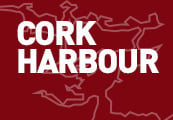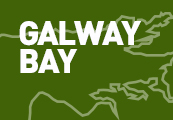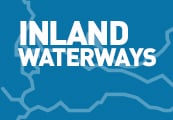Displaying items by tag: Locative
‘A Surreal Dance Across the Swell’: An Air Corps Dauphin’s First Night Rescue Off Donegal
In the third instalment of our three-part series of extracts from Lorna Siggins’ new book, Search and Rescue, the journalist and regular Afloat.ie contributor hears from Commandant Jurgen Whyte about his and his crew’s extraordinary efforts to aid the stricken fishing vessel Locative off Arranmore 32 years ago…
Joan O’Doherty (McGinley) had led a very successful campaign from 1988 to establish the Irish Marine Emergency Service (later the Irish Coast Guard) after fisherman John Oglesby lost his life within sight of the Mayo coast.
The government’s decision to concede Shannon as a west coast air-sea rescue helicopter base was to prove its worth just a month after the report was issued, when the Air Corps search and rescue crew, relocated to the west, were involved in a most dramatic mission. “I have never seen such a sea state in my [fifteen-year] flying career,” Commandant Jim Corby noted afterwards.
The distress call came shortly after midnight on the night of 8/9 March 1990. A 20-metre fishing vessel, Locative, with four crew on board, had lost engine power and was taking in water somewhere off Arranmore Island in Donegal.
Commandant Jurgen Whyte, Dauphin commander on duty, alerted the crew — co-pilot Commandant Corby, winch operator Sergeant Ben Heron and winchman Corporal (subsequently Flight Sergeant) Daithí Ó Cearbhalláin.
Whyte was one of the search and rescue unit’s most experienced pilots, having flown initially in fighter squadron jets. He had held several key posts, including officer commanding the Naval Service support squadron, and officer commanding search and rescue.
Earlier that evening the crew had abandoned a winching exercise due to bad weather. A north-westerly gale was gusting to severe gale force 9, with seas of 3 metres and a very heavy swell of up to 10 metres in height. Whyte was concerned about the wind conditions and the lack of information on the vessel’s position. He requested support from an RAF Nimrod and a Sea King helicopter from Britain; the Arranmore lifeboat was also en route.
Corby got a detailed weather briefing. The worst conditions would be in and around Arranmore Island, with winds of over seventy knots and a heavy rolling sea. The captain decided to fly to Finner, refuel and reassess the situation there.
The Dauphin took off from Shannon for Finner at 1.55 a.m., and by Castlebar it had made contact with the RAF Nimrod. Flares had been sighted by another fishing vessel south of the island of Arranmore and close to Rathlin O’Birne. However, the helicopter crew was under pressure as the MRCC had informed them that the RAF Sea King had had to turn back due to icing weather conditions.
It had taken an hour and fifteen minutes to get to Arranmore, but the work was only beginning
The Dauphin made visual contact with the Nimrod when it reached Sligo Bay at about 3.10 a.m. Nothing had been heard from the fishing vessel for thirty minutes. By chance the Dauphin heard the Locative on VHF channel 24. Using direction-finding equipment, the Air Corps crew estimated its position to the west.
Several minutes later both the helicopter and the Nimrod spotted a red flare. There was no time to refuel; in any case they had enough fuel for ninety minutes. The helicopter flew out to the vessel, which was drifting broadside in an enormous Atlantic swell. The four crewmen were huddled at the stern of the heaving vessel, fortunately visible under a full moon. All were wearing lifejackets, a rare enough occurrence in such emergencies at the time.
It had taken an hour and fifteen minutes to get there, but the work was only beginning. The aircrew spent another thirty minutes trying to hold the aircraft over the vessel to allow winchman Ó Cearbhalláin down safely. As he recorded afterwards, the pitch and roll of the vessel was the worst he had seen to date during his career. He had to take account of the gear on deck, including a large ship’s aerial, a derrick at the bow and several lines and aerials running between it and the wheelhouse.
“The vessel was rising and falling 80 feet [24 metres] in the swell,” Whyte said. “This successive rate of change exceeded the capability of the Dauphin’s automatic hover system.” The hover system allows the pilot to set the minimum height between the belly of the aircraft and the sea; the aircraft will rise and fall with the swell ‒ and automatically fly away if that sequence is broken.
Whyte opted to fly the helicopter with manual height control, which involved the continuous calling of heights by the co-pilot, while the winch operator monitored how close they were to the sea’s surface. As Ben Heron explained, “You can see the clearances. It is the pilot’s job to do what he or she is told, and it is all based on trust.”
There was an additional danger: the aircraft was at constant risk of being skewered by the mast of the vessel below. “Due to the wind position of the Locative, I couldn’t see it below me and under these conditions the chance of collision is very high,” Whyte said. He decided to stand off and wait for the arrival of the Arranmore lifeboat.
Within fifteen minutes the lifeboat arrived — to the relief of the Dauphin crew. It was now 3.35 a.m. Over the radio the aircrew explained that they couldn’t attempt a lift with the vessel lying parallel to the swell and at “cross decks” to the helicopter in hover.
The lifeboat made several unsuccessful attempts to approach the Locative. At one stage Whyte recorded, “We witnessed the trawler bearing down on top of the incoming lifeboat” — and only “prompt, evasive action” by the coxswain averted a collision.
“We thought the lifeboat would be able to come alongside and drag the guys off the deck. Instead, we witnessed this incredible sight where the lifeboat was trying to dart into the vessel and the Locative would rise up over the swell and fall down towards it. The coxswain was incredible, but we knew then that the lifeboat wasn’t going to do it.”
‘The two vessels — lifeboat and Locative — were engaged in a surreal dance across the swell’
There was just forty minutes of hovering time left. The fishermen were totally dependent on the helicopter; if it flew away to refuel, the four men might not survive. The pilot and winch operator remembered reading an account of a rescue where a lifeboat had pulled a powerless vessel around.
“Picture the situation where the helicopter was hovering north‒south, and the vessel was lying east‒west. If the vessel could be pulled into a north-east position, we could at least see part of it,” Whyte explained.
The aircrew suggested that the lifeboat try to secure a line aboard and pull the vessel to a thirty-degree heading off wind, which might be enough to provide visual clues for the helicopter in hover. Coxswain John O’Donnell managed to get two tow lines on board and manoeuvred the Locative successfully into position.
“Once the vessel was lying at this 30-degrees offset, I could see a pattern,” Whyte said. “The two vessels — lifeboat and Locative — were engaged in a surreal dance across the swell, to the extent that the captain could anticipate the movement of one by the other. That sequence developed a distinct pattern, and this allowed us to go in safely.”
At this point the winch crew lowered the hi-line, a light line with a weight on its lower end, attached by a weak link to the helicopter’s winch cable. This allows the crew of a vessel to guide the main winch wire while the winchman, a stretcher, or a lifting strop is lowered and lifted away again, but it must never be attached to anything fixed. The winch crew hoped that the fishermen would know what to do with it and wouldn’t secure it to anything on the deck.
Ó Cearbhalláin descended and within a few minutes he had sent one of the crewmen up. “Due to the big swell the finer points of winching … were discarded and the survivor was ‘snatched’ off,” Ben Heron said afterwards in his report on the mission.
Once Heron had hauled the first survivor into the helicopter, he winched the strop back down to Ó Cearbhalláin. The hook got caught in a fishing net, but the winchman freed it and placed the second crewman in the strop.
However, “at this point things started to go wrong”, Heron said. A large wave hit the boat, throwing it up towards the helicopter and snapping one of the two tow lines from the lifeboat. The pilot had to climb rapidly and move back to avoid being hit by the ship’s aerial. Heron winched out as much slack as he could to prevent the second crewman from being dragged off the deck when the boat went over the top of the wave.
With one tow line gone, the coxswain on the lifeboat had to reduce his towing speed to maintain the second line. If it snapped, the vessel was gone. However, in reducing the tow the lifeboat and helicopter had to cope with the more erratic and haphazard motion of the vessel, which made winching all the more difficult.
‘The strain on all concerned was particularly severe … The crew didn’t know for how much longer the hoist would hold out’
As if there wasn’t enough going on, Ó Cearbhalláin noticed a problem with the hi-line, which was no longer attached to the helicopter’s hoist hook as it should be — a very rare occurrence.
With great presence of mind, he stuffed a bundle of the hi-line into the strop with the second crewman, just as the boat slid down the back of a wave and the crewman was dragged off and scooped up in a massive swing with the hi-line tangled around him. Heron recalled that he only knew he had the man when he felt the shock coming back up through the cable. “He spun around and got all caught up.”
The winch operator untangled the hi-line furiously as he had no knife to cut it. He then had to replace the “weak link” with one from a spare hi-line and winch the strop back down to Ó Cearbhalláin. It took a good ten minutes to make the repair. Fuel was running low and the winchman was getting anxious. The delay seemed like an eternity, according to Corby. His colleague, Whyte, had to maintain a hover which was “too close for comfort” over the vessel, without the vital assistance of “patter” from the winch operator.
“The strain on all concerned was particularly severe, as we had been in the manual hover for over an hour in the worst conditions any of us had ever seen. The crew didn’t know for how much longer the hoist would hold out in the violent snatch lifts,” Corby said.
With just twenty-five minutes of fuel left, winching resumed, with the third “snatch lift” as hazardous as the previous two. Shortly after the last fisherman was taken off, and as the lifeboat was towing the Locative, the second tow line snapped and the vessel was left to the mercy of the sea.
The helicopter routed directly to Finner with the four fishermen and landed with just five minutes of fuel remaining. Coxswain O’Donnell later told the Air Corps board of inquiry that it was a “hellish night”; a fitting statement, the Air Corps noted, from a man who had received a citation for his courage from the RNLI.
The aircrew agreed that the lifeboat was crucial in helping to position the fishing vessel and in acting as a visual reference. Both crews had demonstrated great courage, stamina and seamanship. The pilots knew that the winching crew were the very best they could have hoped for — “top guns”, Whyte remarked afterwards.
The vital need for constant radio communication between winchman and aircraft was raised by members of the aircrew in their reports to the Air Corps. For their efforts they were awarded a DSM with distinction, the first time a Dauphin crew had been recommended for one. It was also the first such medal for a sea rescue, and the first night rescue by a Dauphin attached to the Air Corps fleet.
From Chapter 10, A Developing Service. Search and Rescue: True Stories of Irish Air-Sea Rescues and the Loss of R116 by Lorna Siggins is published by Merrion Press, €16.95/£14.99 PBK.

























































